Solid Slab or Tile: What's Better for My Bathroom Remodel?
A shower can only be so relaxing in a space you despise; no one likes to have their peaceful rinse disrupted by noticing all the things that irk them about the area.
Remodeling your bathroom is an opportunity to remove this friction from your everyday life, by redesigning an essential space that embraces your needs and preferences. The goal of your remodel should be to create a room with aesthetics and required maintenance that suits you.
See also: How to Choose Colors for Your Bathroom Remodel & Avoid Palette Paralysis
In the design process, you’ll be faced with many choices for your bathroom. One of those decisions will be what you’d like your tub and/or shower walls to be made from. While tile used to be the dominant choice, now there are more options to explore – including slab.
This blog post will compare the two options - tile and slab - and help guide you to choose the material that’s best for the shower walls of your bathroom project.
What’s the difference between slab and tile?
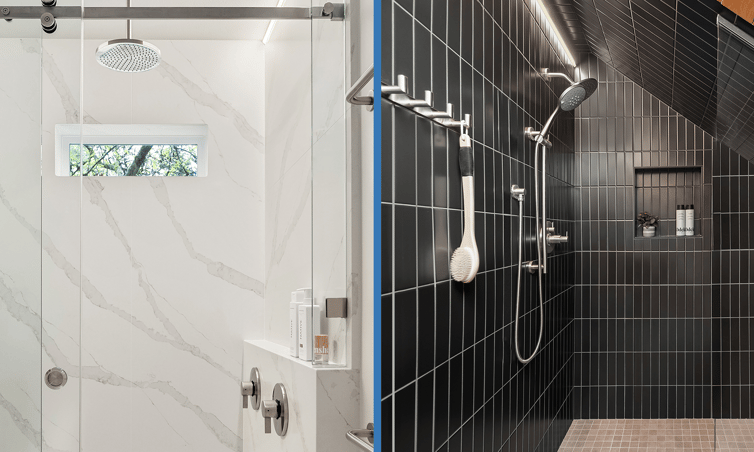
Slabs are large pieces of material that are meant to create a seamless, unbroken surface across a wall, backsplash, or floor, etc.
Tiles are smaller pieces of material laid across a surface, with grout used to fill the gaps between each of the pieces.
While slab and tiles differ in available material, cost, installation, and maintenance, the most prominent difference between the two is their look: seamless (slab) or arranged (tile).
Let’s learn more about each, and how they will affect your bathroom
Tile: The Pros and Cons of the Classic Option
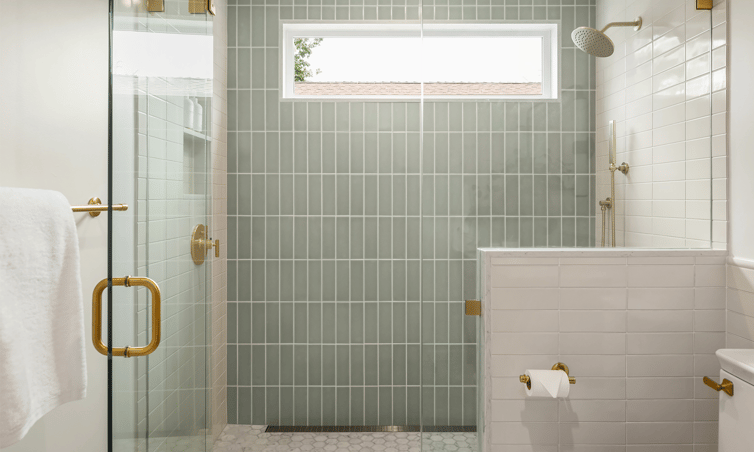
Tiles have consistently been a popular surface covering for many years, and for good reason:
- Design versatility and customization. Tiles come in many shapes, sizes, and materials, making the design options virtually endless.
- Hygienic surface. Porcelain and ceramic tiles are inhospitable to the growth of bacteria. Tiles themselves are considered easy to clean.
- Wide availability of stock and installation. Since tile is a popular choice in bathrooms, there will be plenty of material in stock to choose from and many professionals that are qualified to install tile.
- Eco friendly. Porcelain and ceramic tiles are made from natural raw material, so their production does very little to damage the environment.
There are, however, some downsides to tiles as well:
- Grout is hard to clean. The lines in between each tile are where dirt, water, and other particles can get caught, eventually leading to mold if not cleaned properly. Grout is also prone to stains.
- The installation is not simple. Tiles can take a long time to install, and it’s a bit of a messy process. Your walls need to be properly prepped for the tile to go on, and that’s just the first of many steps in the process. This could lead to a higher labor cost than a slab installation.
- More susceptible to leaks. It’s easier for leaks to spring up through tile than other more seamless surfaces.
See also: Finding the Perfect Tile: How to Satisfy the Needs of Your New Bathroom
Slab: What to know about this striking choice
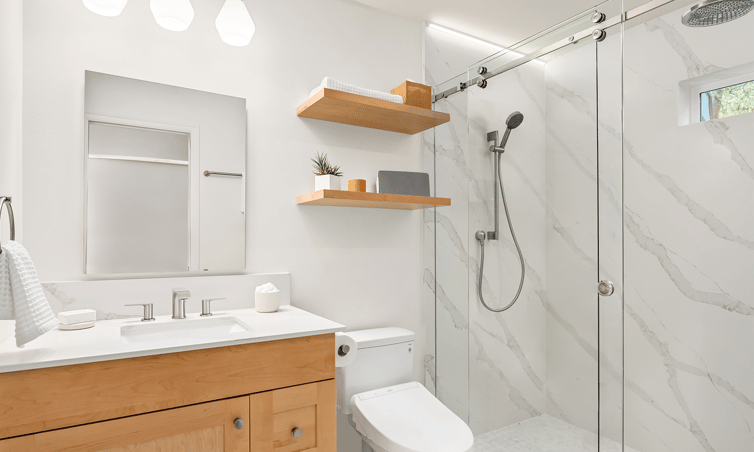
What are the benefits to a shower wall covering that can rival the go-to choice? Turns out, there’s many!
- Easy maintenance and cleaning. Since there are no lines of grout to scrub, keeping slabs clean is incredibly easy.
- Hygienic surface. Slabs are often made from antibacterial and antimicrobial materials.
- Simpler installation process – once it gets inside! Slabs typically have simpler, cleaner installation processes.
- Long life span. When installed correctly and properly cared for, slab shower walls can last a very long time. They are less susceptible to cracks and chips than tile.
However, no material can be perfect. Here are some drawbacks to consider about slabs.
- Limited design options. Other than choosing the material you’d like your slab to be made from, there aren’t as many design options.
Pro Tip
Adding a built-in shower niche to your slab shower will create an eye-catching point of interest in the space, while still maintaining the seamless, contemporary, and luxurious appeal of slab.
- Getting slabs into the room can be a challenge. Slabs are large, heavy pieces of material; they will require a plan for how you’ll get them inside the home and into the bathroom so they can be installed. If a slab proves to be too large to fit through doorways or carry upstairs, an exterior opening can be made in the room, or the slab can be divided into smaller pieces and you’ll wind up with a few more seams.
- “Faux” can look fake. If your slab is a man-made material that is crafted to mimic a natural stone, such as marble, sometimes the illusion comes off as phony.
- Not as eco-friendly. If your slabs consists of man-made material, it takes a greater toll on the environment.
What’s the cost difference between slab and tile?
Both slab panels and tiles can vary in cost greatly.
The cost of tile depends on the material the tiles are made of, as well as the manufacturer you purchase from and how rare those tiles are. Natural stone tiles will be much more expensive than porcelain or ceramic tiles.
A slab of natural stone will be more expensive than tiles of the same natural stone. However, since installation is more involved for tiles, the overall cost of tile may be just as expensive or even more so than slab.
There are more affordable routes as well as expensive options for both slab and tile.
See also: Smart Strategies for Staying on Budget During Your Bathroom Remodel
Slab or tile: which should I choose for my bathroom?
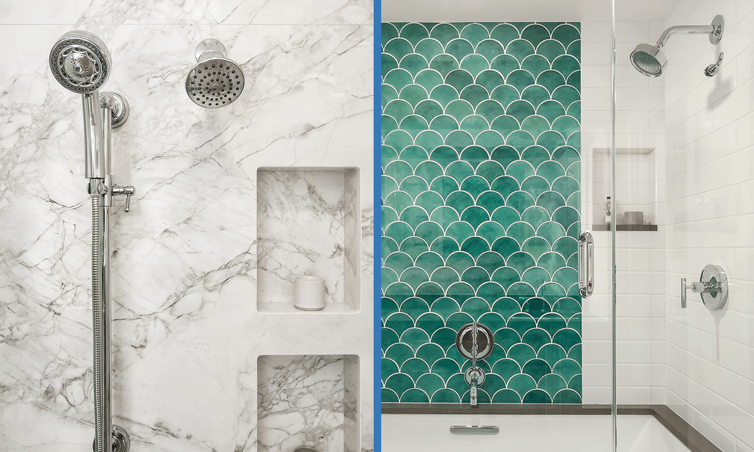
There is no firm right or wrong answer when choosing between slab and tile – the decision comes down to your design preferences, the care and maintenance you’re willing to put in, and what you can afford.
First, decide what your design goals are for your shower walls. Would you like to add interest and customized design to the room? If so, tiles may be your answer. Would you rather have a sleek, modern appearance to your shower? In that case, slab would probably suit you better.
Remember that tile will require more maintenance than slab. If you want the option that’s easier to clean, slabs are the way to go.
Finally, consider the cost of both options. If your heart is set on natural stone, tile may be a more avenue. If you’re willing to use porcelain, ceramic, quartz, or other manmade materials, slab could be financially sound for you.
See also: Solid Slab or Tile Backsplash: Which Design Will Look Best in Your Kitchen?
Let expert designers and builders help you decide
Remodels are full of tough decisions. Innovative Home Renovations has a team of experienced professionals that are ready to help you make choices that will lead to a Seattle home that you love. Whether you’re in need of remodeling partners for your bathroom, kitchen, or a more complex transformation, our in-house designer and project managers are happy to help. Contact us today to get started.



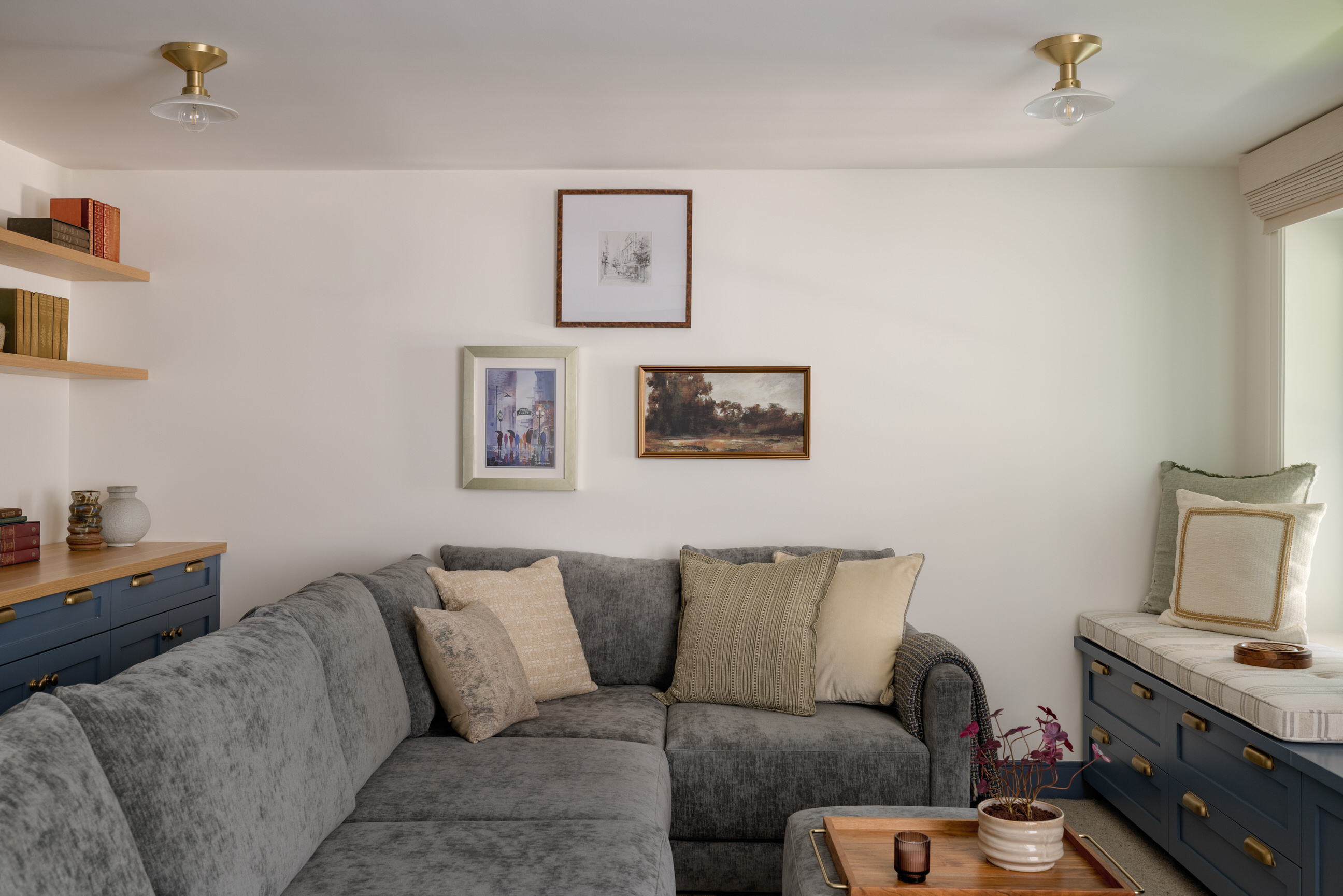
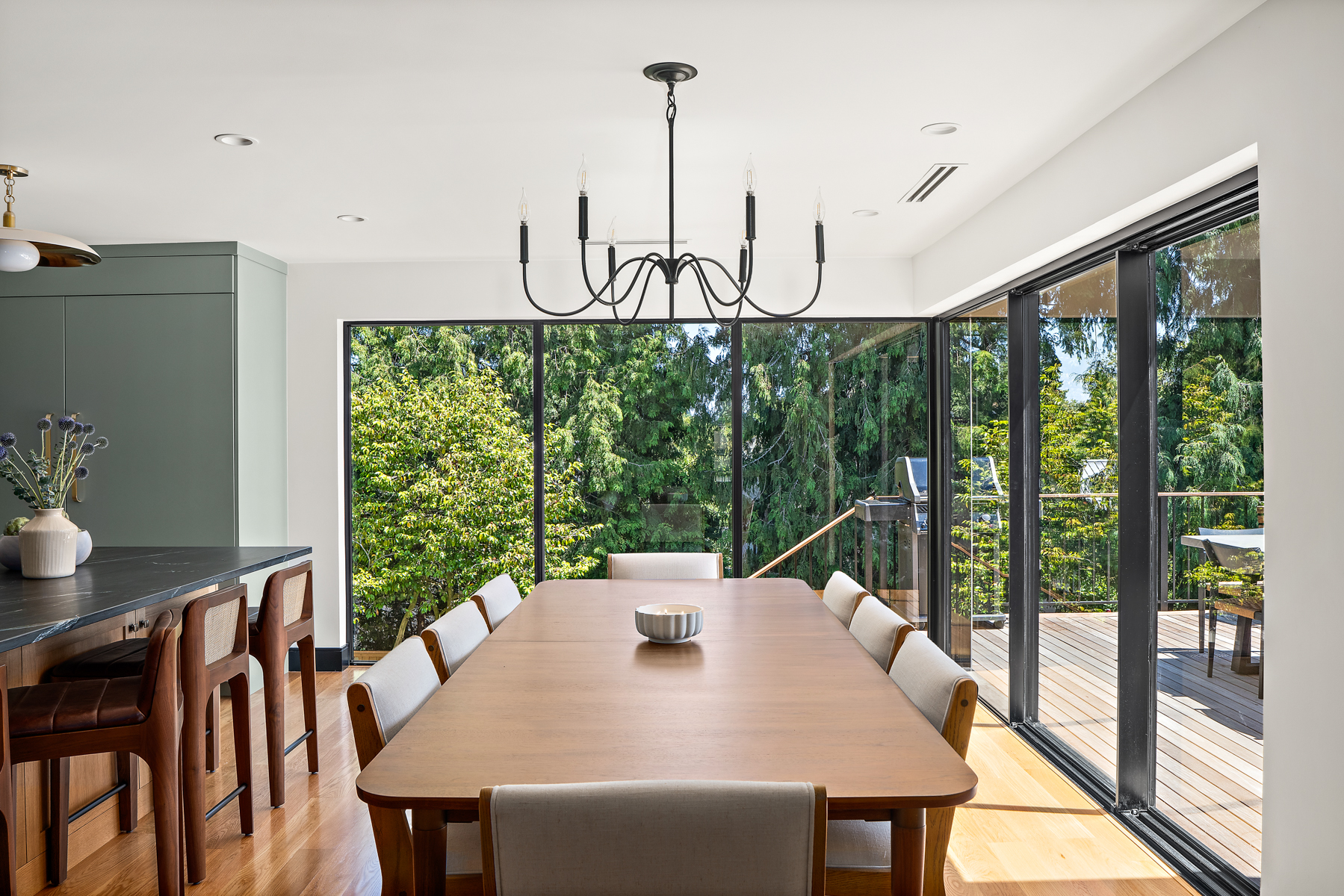
by Haley Carroll